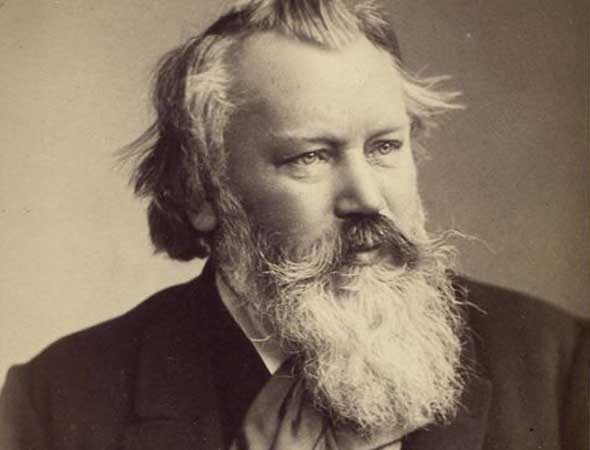Brahms – Concerto in D Major for Violin and Orchestra, Op. 77

Johannes Brahms
- Allegro non troppo
- Adagio
- Allegro giocoso, ma non troppo
In Brahms’ piano concertos, the technical demands are formidable, but the virtuosic writing is subtle— more poetry than flash. Not so in the violin concerto, which is full of double-stops, vigorous bowing, and the full range of violin pyrotechnics. Brahms was a fan of the Magyar-inspired music known in his day as “Gypsy violin,” and though we don’t hear it in the Concerto’s melodies (as we do, for example, in his Hungarian Dances), we do hear it in the energy and the style of phrasing, and in bowing that really digs into the strings.
In many passages the music seems to invite the tossing of hair and stamping of feet, though most soloists seem to refrain from such antics.
The concerto is constructed within the traditional frame of three movements in fast-slow-fast sequence, opening with a formal introduction that leads to the violin’s entrance in a dramatic burst of sound. High in energy and in melodic content, this movement gives way to a graceful second movement, marked adagio, in which the oboe is foregrounded for another lengthy, if tuneful, introduction. (The violinist Pablo de Sarasate famously objected to the idea of standing in wait during this adagio, and refused to play the concerto altogether!) But unlike some slow concerto movements, this one puts plenty of spice into the mix once the oboe’s melody gives way to the solo violin and full orchestra.
The third movement is unalloyed exuberance— some of the most joyful music Brahms ever composed. Written in rondo form, it returns the concerto to its original D major key.











